Orbea decaisneana
Scientific name: Orbea decaisneana
Common names: Starfish Plant, Starfish Flowers, Carrion Flowers.
Natural habitat: Native to the diverse landscapes of East Africa, Orbea decaisneana thrives in arid conditions and is well-adapted to rocky substrates and soils with excellent drainage.
Flowers: The flowers of the Orbea decaisneana are a stunning dark burgundy color and typically measure about 1 to 1.5 inches (2.5 to 3.8 centimeters) across. Their star-like shape and striking hue make them a bold focal point in any setting.
Stems: The stems of the Orbea decaisneana are uniquely speckled, combining shades of pale green and maroon. They reach up to 5 inches (12.7 centimeters) tall and feature a series of sharp spikes that contribute to the plant’s dramatic silhouette.
$3.00
Elevate your succulent collection with the striking Orbea decaisneana. This hardy plant is a stunning addition to any indoor garden, boasting an intriguing contrast of mottled stems and deep burgundy flowers that captivate the eye. Not only is it an attractive decorative piece, but it’s also an interesting conversation starter due to its unique bloom characteristics. Easy to care for and requiring minimal attention, it’s the ideal choice for both novice and experienced plant enthusiasts looking to enrich their plant array with something truly unique.
We sell all Stapeliads as unrooted cuttings – a bunch of 3 stems each minimum 4 inches (10 cm).
General Care for Stapeliads
Stapeliads are a unique group of succulent plants known for their striking flowers and interesting forms. They belong to the Apocynaceae family and are mostly native to Africa, with some species found in Asia and the Middle East. Here’s a general guide to caring for Stapeliads:
- Lighting: Stapeliads thrive in bright, indirect light. Direct sunlight can be harmful, especially during the hottest parts of the day. A partially shaded spot is ideal.
- Watering: These plants require moderate watering. Allow the soil to completely dry out between waterings. Over-watering can lead to root rot, so it’s essential to ensure good drainage.
- Soil: Use a well-draining cactus or succulent mix. Stapeliads prefer a soil mix that allows for good air circulation around the roots.
- Temperature: Most Stapeliads prefer warm temperatures and are not tolerant of frost. Keep them in temperatures above 6-8°C (43-46°F).
- Humidity: Stapeliads generally do well in average room humidity. However, during the growing season, a slight increase in humidity can promote healthier growth.
- Fertilization: Feed sparingly during the growing season. Use a balanced, water-soluble fertilizer at half strength.
- Propagation: Propagation can be done through stem cuttings or seeds. Allow cuttings to dry before planting.
- Pests and Diseases: Watch out for pests like mealybugs and take precautions against snails and slugs. Stapeliads are generally resistant to diseases if well taken care of.
Specification: Orbea decaisneana
| Weight | 0.55 lbs |
|---|



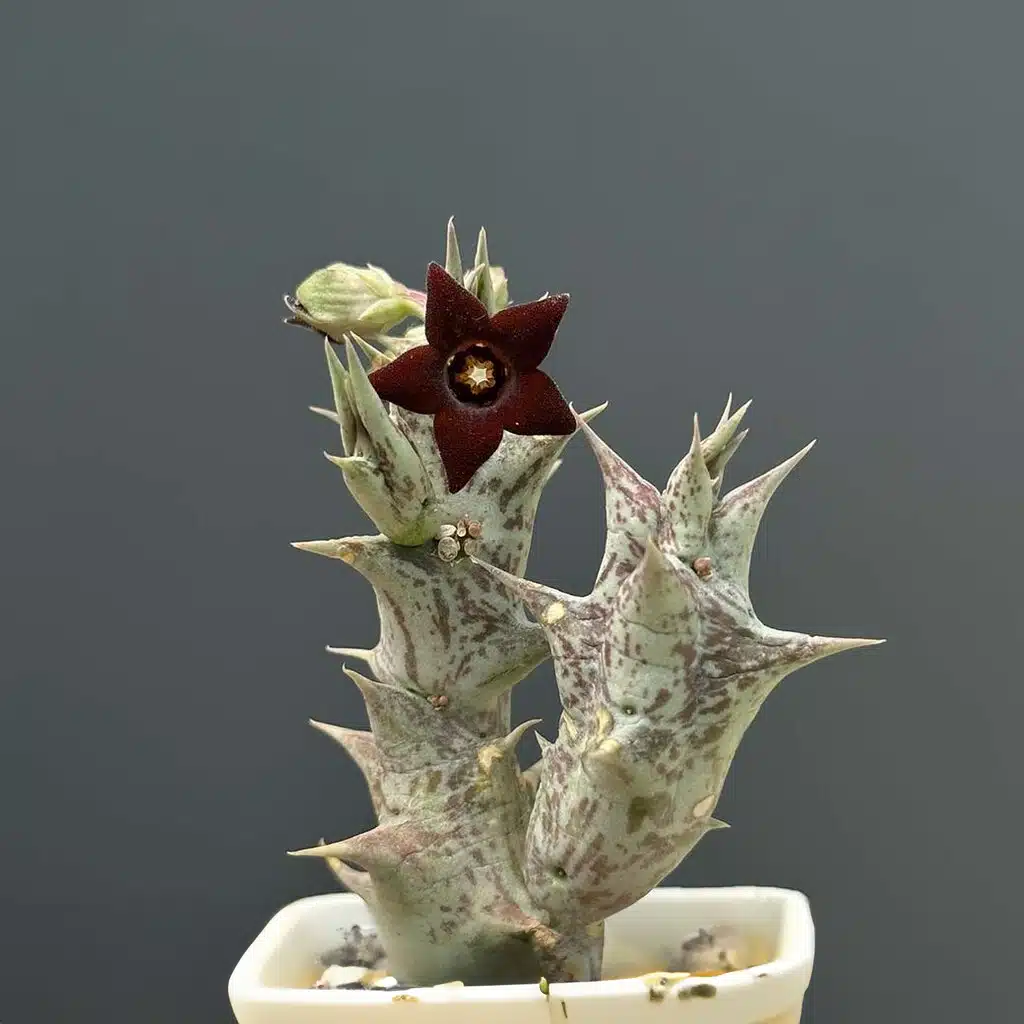
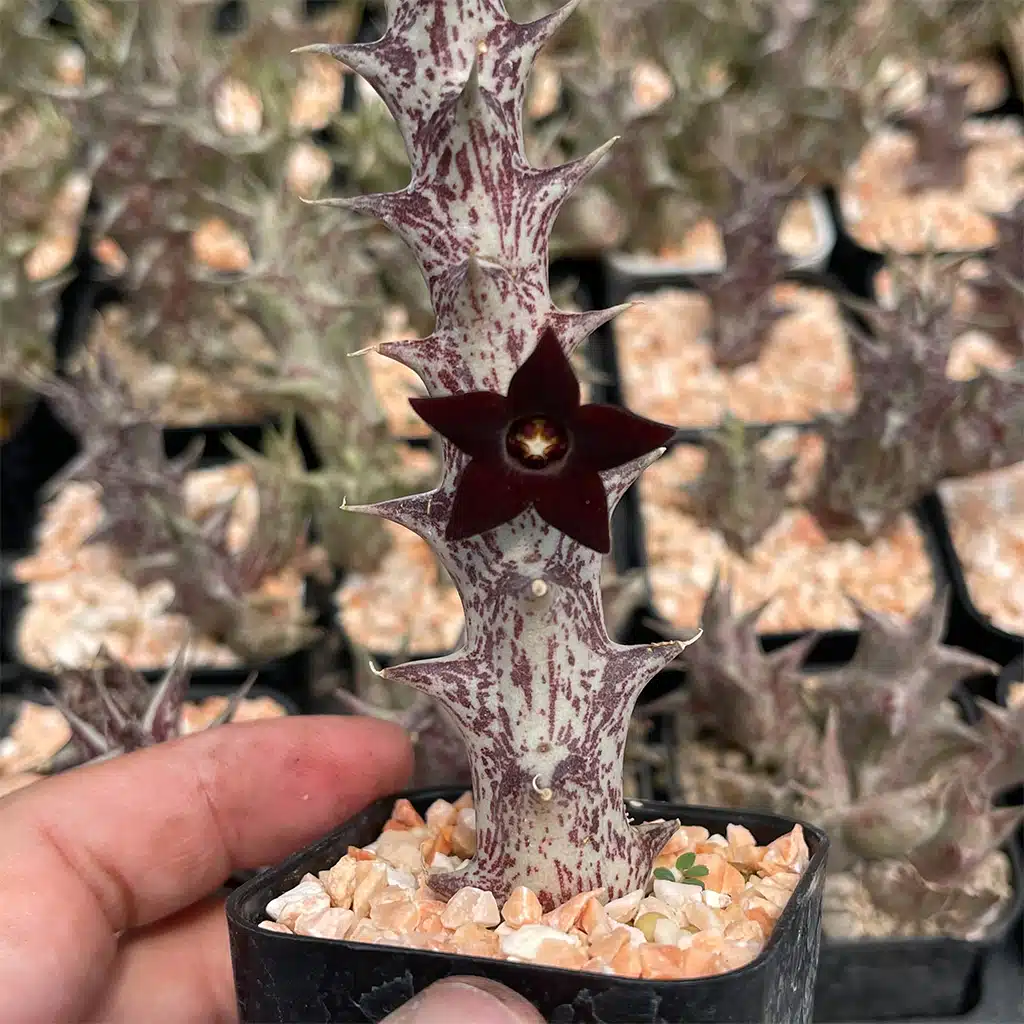
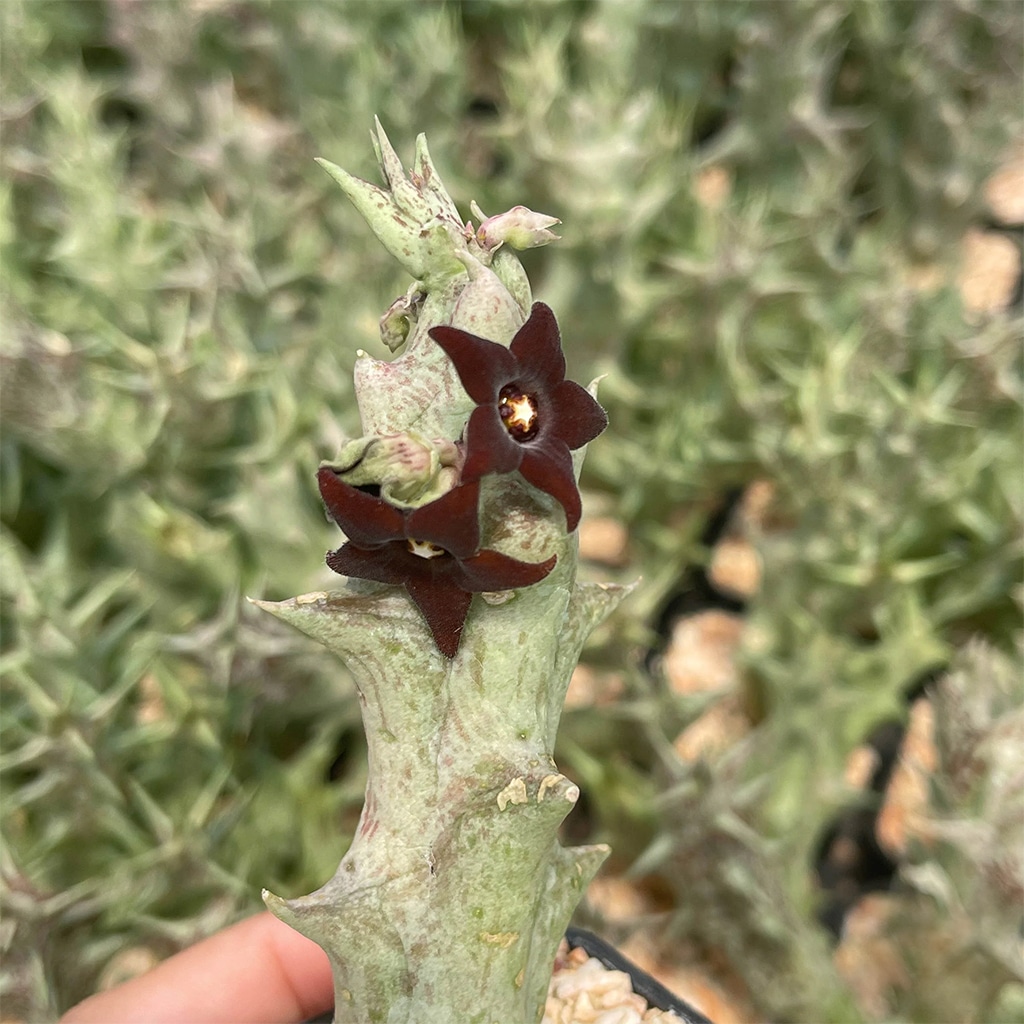
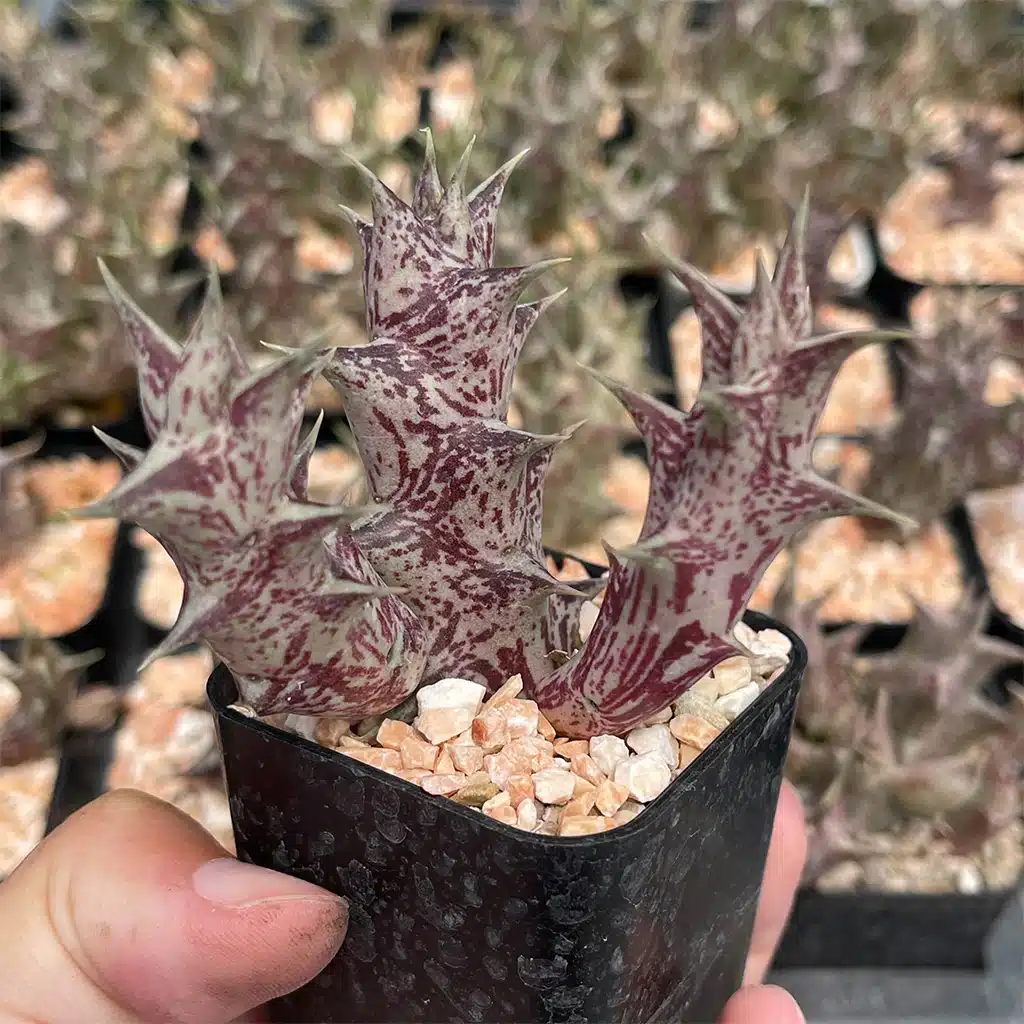



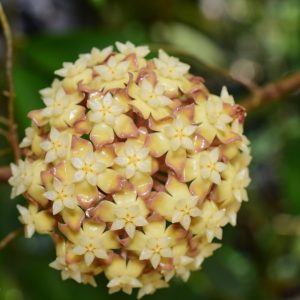
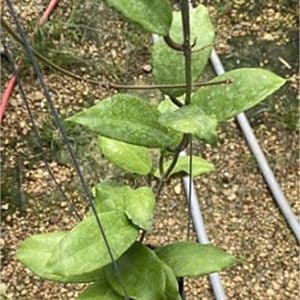
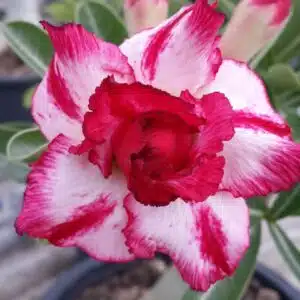
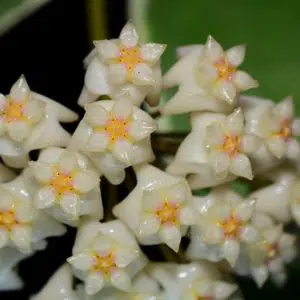
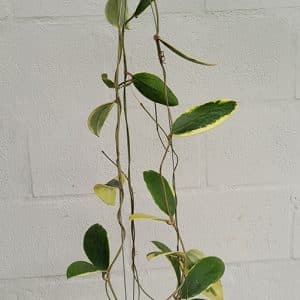

There are no reviews yet.